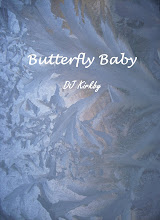WASTED isn't the sort of book I would normally read because it's in the young adult category. However, I follow Nicola on twitter (she makes me laugh, lots) and I noticed that she was getting a lot of reviews for WASTED. I became intrigued and decided to order a copy, and I am so glad I did. This may be in the YA genre but it is definitely suitable for older adults too.
This very emotive novel is about the choices life throws at you, the sadness and deep joy that comes with growing up and growing wiser. It's all kinds of beautiful. There are two endings to this novel and I'm betting you can't limit yourself to reading just one of them
Nicola has a WASTED blog here, a blog full of useful tips for writers here and she tweets using this profile: http://twitter.com/nicolamorgan.
You can find a copy of WASTED in all good bookshops and get free overseas shipping at The Book Depository
Free Online Dating
4 months ago
.jpg)









